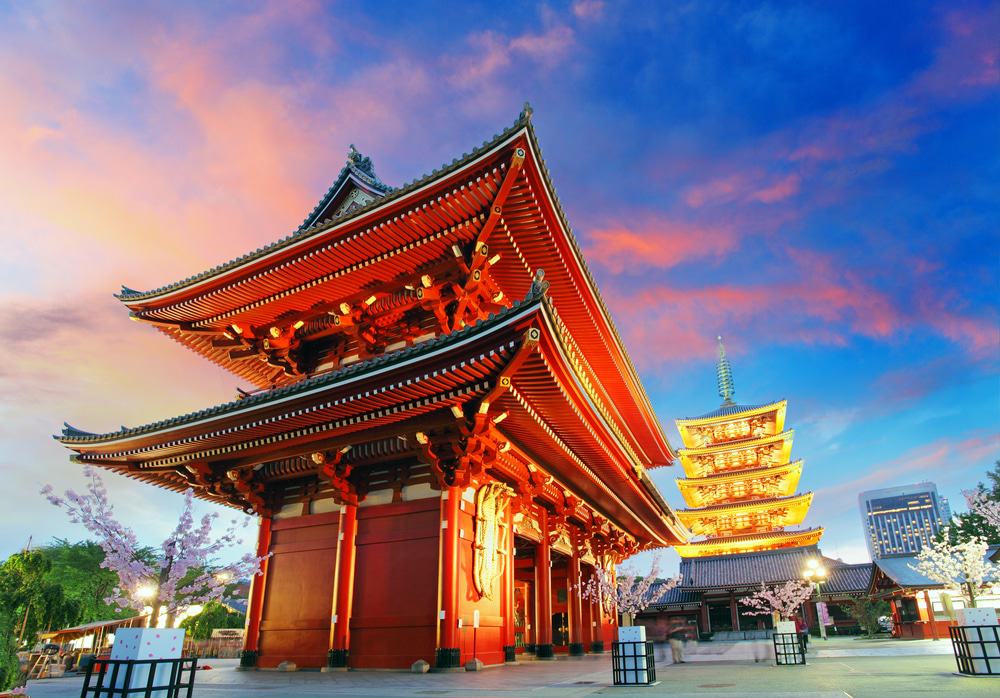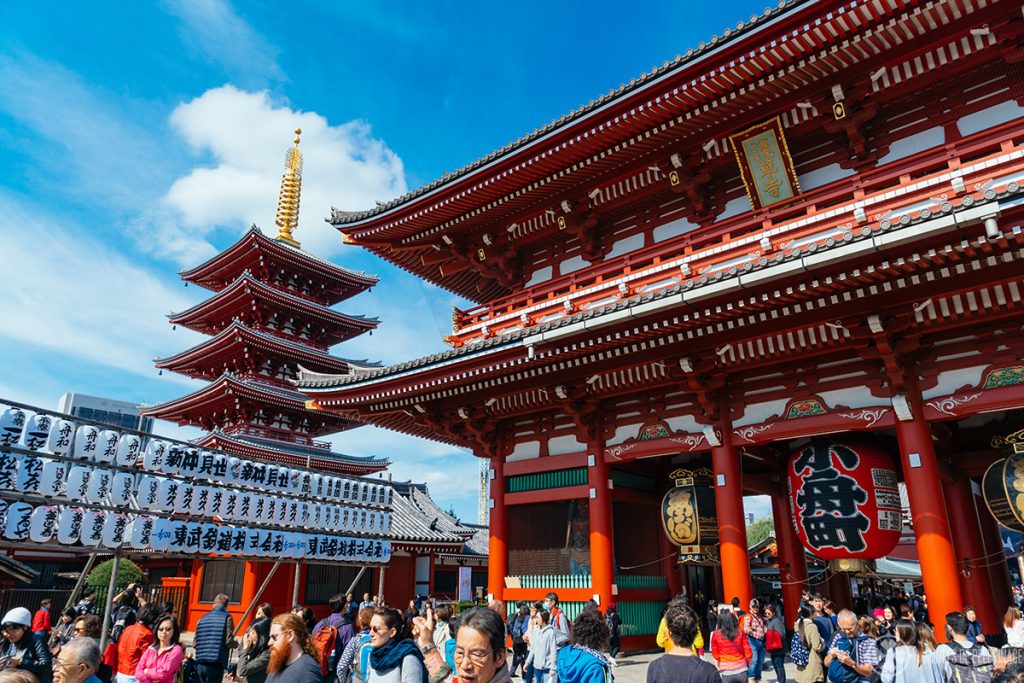
Japan, the "Land of the Rising Sun," is a captivating paradox. It’s a nation where ancient temples whisper tales of samurais and emperors, while neon-drenched metropolises hum with the pulse of cutting-edge technology. From the serene beauty of bamboo forests to the bustling energy of Shibuya Crossing, Japan offers an experience that is both profoundly traditional and exhilaratingly modern. For the discerning traveler, it presents a tapestry woven with rich history, breathtaking landscapes, unparalleled cuisine, and a culture of meticulous detail and gracious hospitality.
This comprehensive guide will navigate you through the essentials of planning an unforgettable journey to Japan, covering its most iconic attractions, delving into its fascinating history, providing practical travel tips, exploring accommodation options, deciphering its efficient transportation system, and revealing the optimal times to visit.
Unveiling the Crown Jewels: Top Attractions in Japan

Related Articles about Japan: A Tapestry of Tradition and Tomorrow – Your Ultimate Guide to Exploration:
- A Traveler’s Handbook to Singapore: A Jewel of Southeast Asia
- Austria: A Timeless Symphony of Imperial Grandeur, Alpine Majesty, and Artistic Soul
- The Windy City Beckons: A Comprehensive Travel Guide to Chicago
- Edinburgh: A Journey Through Time in Scotland’s Enchanting Capital
- Cusco: Gateway to the Sacred Valley and the Lost City of the Incas
Japan’s allure lies in its diverse array of attractions, catering to every interest. Here are some of the absolute must-sees:
1. Tokyo: The Electric Metropolis
No visit to Japan is complete without experiencing Tokyo. This sprawling capital is a sensory overload in the best possible way.
- Shibuya Crossing: Witness the iconic scramble crossing, a symbol of Tokyo’s vibrant energy.
- Senso-ji Temple (Asakusa): Immerse yourself in history at Tokyo’s oldest temple, with its impressive Kaminarimon Gate and Nakamise-dori market.
- Meiji Jingu Shrine: Find tranquility amidst the urban buzz at this peaceful oasis dedicated to Emperor Meiji and Empress Shoken.
- Harajuku: Explore the quirky street style, vibrant shops, and delicious crepes of this youth culture hub.
- Ghibli Museum (Mitaka): A must for Studio Ghibli fans, this whimsical museum brings beloved animated worlds to life (book tickets well in advance!).
- Tokyo Skytree & Tokyo Tower: Ascend for panoramic city views, offering a breathtaking perspective of the urban sprawl.

2. Kyoto: The Heart of Traditional Japan
Once the imperial capital, Kyoto is a treasure trove of ancient temples, serene gardens, and traditional geisha districts.
- Fushimi Inari-taisha Shrine: Hike through thousands of vermillion torii gates winding up a sacred mountain, a truly unforgettable experience.
- Kinkaku-ji (Golden Pavilion): Marvel at the stunning reflection of this Zen Buddhist temple covered in gold leaf on its surrounding pond.
- Arashiyama Bamboo Grove: Wander through towering stalks of bamboo, creating an ethereal and calming atmosphere.
- Kiyomizu-dera Temple: Admire the impressive wooden stage offering panoramic views of Kyoto and its surroundings.
- Gion District: Stroll through the historic geisha district, hoping for a glimpse of elegantly dressed geiko and maiko.
- Nishiki Market: Indulge your taste buds in "Kyoto’s Kitchen," a vibrant market offering local delicacies and fresh produce.
3. Mount Fuji: The Iconic Sacred Peak
Japan’s most recognizable symbol, Mount Fuji, is a majestic stratovolcano offering breathtaking views and a sense of spiritual awe.
- Fuji Five Lakes (Fujigoko): Explore the scenic lakes at the northern base of Mount Fuji, offering stunning reflections of the peak and opportunities for hiking, camping, and boating.
- Climbing Mount Fuji: For the adventurous, climbing Mount Fuji during the official climbing season (July to September) is a rewarding challenge.
- Hakone: A popular mountain resort town near Mount Fuji, offering hot springs, art museums, and scenic boat rides on Lake Ashi.
4. Hiroshima: A Symbol of Peace and Resilience
Hiroshima, once a city devastated by atomic bombing, has transformed into a powerful symbol of peace and remembrance.
- Hiroshima Peace Memorial Park & Museum: A poignant and essential visit to understand the history of the bombing and advocate for peace.
- Itsukushima Shrine (Miyajima Island): Take a ferry to this sacred island to witness the iconic "floating" torii gate of the Itsukushima Shrine, a UNESCO World Heritage site.
5. Nara: Ancient Capital and Friendly Deer
A short train ride from Kyoto, Nara offers a glimpse into Japan’s earliest history and a unique encounter with its wild deer.
- Todai-ji Temple: Home to a colossal bronze Buddha statue, this temple is one of Japan’s most historically significant.
- Nara Park: Roam with hundreds of wild Sika deer, considered messengers of the gods, who are unafraid of humans and will often bow for crackers.
6. Osaka: The Culinary Capital and Vibrant Nightlife
Known for its lively atmosphere and incredible food scene, Osaka is a city that delights the senses.
- Dotonbori: Experience the vibrant neon signs, street food stalls, and energetic atmosphere of this iconic entertainment district.
- Osaka Castle: Explore this magnificent reconstructed castle, a symbol of Osaka’s rich history.
- Universal Studios Japan: A thrilling destination for theme park enthusiasts.
Echoes of the Past: A Glimpse into Japan’s History
Japan’s history is a fascinating journey through periods of isolation, feudalism, and rapid modernization. Understanding its past enriches the travel experience:
- Jomon Period (c. 14,000 – 300 BCE): The earliest known period, characterized by hunter-gatherer societies and distinctive pottery.
- Yayoi Period (c. 300 BCE – 300 CE): Introduction of rice cultivation and metalworking from mainland Asia, leading to settled communities and social stratification.
- Kofun Period (c. 300 – 538 CE): Marked by the construction of large burial mounds (kofun) and the rise of powerful clans.
- Asuka and Nara Periods (538 – 794 CE): Introduction of Buddhism and Chinese culture, laying the foundation for Japanese statehood and writing systems.
- Heian Period (794 – 1185 CE): The golden age of classical Japanese culture, with advancements in literature, art, and courtly life. Kyoto became the imperial capital.
- Kamakura Period (1185 – 1333 CE): The rise of the samurai class and the establishment of the first shogunate, marking a shift in political power.
- Muromachi Period (1336 – 1573 CE): A period of internal conflict and the flourishing of Zen Buddhism and ink painting.
- Azuchi-Momoyama Period (1573 – 1603 CE): The unification of Japan under powerful warlords like Oda Nobunaga and Toyotomi Hideyoshi.
- Edo Period (1603 – 1868 CE): The Tokugawa shogunate brought about a long period of peace and isolation (sakoku). This era saw the development of distinct Japanese arts, theatre (Kabuki, Noh), and Ukiyo-e prints.
- Meiji Restoration (1868): The end of the shogunate and the restoration of imperial rule. Japan rapidly modernized, industrializing and expanding its influence.
- World War II and Post-War Era: Japan’s involvement in WWII and its subsequent occupation led to a dramatic transformation, focusing on economic recovery and democratic reforms.
- Modern Japan: Today, Japan is a global leader in technology, innovation, and culture, while fiercely preserving its rich heritage.
Navigating the Land of the Rising Sun: Essential Travel Tips
To ensure a smooth and enjoyable trip, keep these practical tips in mind:
- Visa Requirements: Check the visa requirements for your nationality well in advance. Many nationalities can enter Japan visa-free for short tourist stays.
- Currency: The currency is the Japanese Yen (JPY). Credit cards are becoming more widely accepted, but cash is still essential, especially in smaller establishments and rural areas. ATMs that accept foreign cards can be found at convenience stores (7-Eleven, FamilyMart) and post offices.
- Language: While many tourist areas have English signage, learning a few basic Japanese phrases will be greatly appreciated. "Konnichiwa" (hello), "Arigato gozaimasu" (thank you), and "Sumimasen" (excuse me/sorry) are essential. Consider a translation app.
- Etiquette: Japanese culture places a high value on respect and politeness.
- Bowing: A common form of greeting and showing respect.
- Shoes: Remove shoes before entering homes, temples, and some restaurants. Look for designated shoe areas.
- Chopsticks: Never stick chopsticks upright in a bowl of rice or pass food directly from one pair of chopsticks to another.
- Noise: Avoid loud conversations on public transport.
- Tipping: Tipping is generally not expected and can even be considered rude.
- Connectivity: Rent a pocket Wi-Fi device or purchase a local SIM card for constant internet access. Free Wi-Fi is available in many hotels, cafes, and public spaces, but can be unreliable.
- Health and Safety: Japan is a very safe country with a low crime rate. Tap water is safe to drink.
- Emergency Numbers: Police: 110, Fire and Ambulance: 119.
Where to Rest Your Head: Accommodation Options
Japan offers a diverse range of accommodation to suit every budget and travel style:
- Hotels: From luxurious international chains to budget-friendly business hotels, you’ll find a wide selection. Business hotels are a great value, offering clean, compact rooms with all the essentials.
- Ryokans (Traditional Japanese Inns): For an authentic cultural experience, stay in a ryokan. These inns feature tatami mat rooms, futon bedding, communal baths (onsen), and often serve exquisite multi-course kaiseki dinners.
- Minshuku: Similar to ryokans but typically smaller and family-run, offering a more intimate and casual experience.
- Hostels: An excellent option for budget travelers, offering dormitories and private rooms, often with communal kitchens and social spaces.
- Capsule Hotels: A unique Japanese innovation, offering small sleeping pods for solo travelers on a tight budget. They are clean, efficient, and an experience in themselves.
- Airbnb/Vacation Rentals: Increasingly popular, offering apartments and houses for a more local feel, especially for families or longer stays.
Effortless Journeys: Transportation in Japan
Japan boasts one of the most efficient and punctual public transportation systems in the world.
- Shinkansen (Bullet Train): The iconic high-speed rail network connects major cities, offering a fast, comfortable, and scenic way to travel. Consider purchasing a Japan Rail Pass if you plan to travel extensively by train.
- Local Trains and Subways: Within cities, extensive subway and train networks make getting around a breeze. Purchase an IC card (like Suica or Pasmo in Tokyo, Icoca in Kansai) for easy tap-and-go travel on most public transport.
- Buses: Buses are prevalent in cities and rural areas, serving as a good option when trains aren’t available.
- Taxis: Taxis are readily available but can be expensive, especially for long distances.
- Cycling: In some cities like Kyoto, cycling is a popular and enjoyable way to explore at your own pace.
The Golden Window: Best Time to Visit Japan
Japan’s distinct seasons offer unique beauty and experiences:
- Spring (March to May): Cherry Blossom Season (Sakura) is arguably the most popular time to visit. The country bursts into a breathtaking spectacle of pink and white blossoms. Temperatures are mild and pleasant, perfect for sightseeing. However, this is also peak tourist season, so expect crowds and higher prices.
- Summer (June to August): Summers are hot and humid, with a rainy season (tsuyu) typically in June and July. Despite the heat, this is a great time for festivals (matsuri), fireworks displays, and enjoying beaches and mountain resorts.
- Autumn (September to November): Autumn Foliage (Koyo) is another stunning spectacle, with leaves turning vibrant shades of red, orange, and yellow. The weather is generally crisp and pleasant, making it ideal for outdoor activities and exploring.
- Winter (December to February): Winters are cold, especially in northern Japan, with heavy snowfall in many regions, perfect for skiing and snowboarding. Southern Japan experiences milder winters. Cities are beautifully decorated for the holidays, and there are fewer crowds, making it a good time for budget-conscious travelers.
In conclusion, Japan is a destination that promises an unforgettable journey of discovery. From the ancient whispers of its history to the futuristic hum of its cities, it offers a multifaceted experience that will leave you with lasting memories. By understanding its top attractions, delving into its rich past, heeding practical travel advice, and choosing the perfect time to visit, you can unlock the magic of Japan and embark on an adventure that truly transcends the ordinary.





